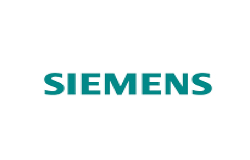How the deployment of Lean Six Sigma generated business benefit of almost £2m for a distribution centre:
Problem Statement
| Re-delivery costs/year | £240k |
| Lost sales/year | £1.4m |
| Agency costs/year | £335k |
| Rework process time/year | £62k |
| Estimated annual projected costs |
£2.037m |
“Deliver a [sustainable] solution to the existing problem with a key target of achieving a service level of > 98.5%” (Supply Chain Director)
The company enlisted Dembridge to assist them in identifying the root cause of the problem and to deliver a sustainable solution.
The Approach
To enable a dynamic approach to the problem, a full week’s intensive training programme was undertaken with selected representatives from each of the functions. These representatives were trained to ‘Green Belt’ standard. These newly skilled people formed the project team and worked under the direction of the Dembridge Black Belt.
Starting at the customer end, a value stream mapping exercise was undertaken in order to understand the flow of work across each function. This mapping exercise included representation from all those involved in the value stream. From this exercise we determined a number of key statistics including; cycle time, Takt time and lead times. We then deduced where any bottlenecks occurred and where improvement opportunities could be gained.
A series of small workshops was undertaken with those involved to fully understand the process steps within the value stream, identifying those that did not add any value and removing those same processes.
This complete end-to-end proves mapping exercise identified a considerable number of non-value adding processes including barriers to the flow of materials and communications.
The Findings
Resultant from the measurement and analytical phases of the project it was established that a series of unnecessary processes throughout the value stream were in existence. As we went through the processes it became clear that the root cause of the problem resided in the receiving function of the DC where continuing failures to clear inbound deliveries had a significant knock effect to rest of the process.
The delays in the receiving process through ineffective processes generated high levels of downtime for the subsequent processes resulting in unproductive work (people do nothing whilst waiting for the preceding process to be completed) which caused a ripple effect to downstream processes.
Throughout the entire DC process – from the point of an inbound delivery arriving on site to the delivery of the order – a total of 2,456 different processes were recorded.
The Solution
Working with the team, agreement was reached to eliminate a significant level of the non-value adding processes which would facilitate a smooth flow across the functions, moving to ‘pull’ rather ‘push.’ The key changes made were:
- Redefining the process for booking deliveries (working with the suppliers)
- Eliminating non-value adding processes
- Cross-functional training and awareness
Through the rigorous exercise a total of 1,311 processes (53%) were eliminated – the equivalent of 69 hours per day. As part of the project, a suite of Standard Operating Procedures was drawn up and trained in to all DC personnel including all revised process maps.
The Benefits
In accordance with the project definition and subsequent objective, and utilising the Lean Six Sigma methodology – Define, Measure, Analyse, Improve, Control (DMAIC) – all targets were met with significant tangible benefits including:
| Cost Concern | Estimated Cost | Revised | Saving/Gain |
| Re-delivery costs/year | £240k | £9k | £231k |
| Lost sales/year | £1.4m | £120k | £1.18m |
| Agency costs/year | £335k | £48k | £287k |
| Rework process time/year | £62k | £8k | £54k |
| Estimated annual projected costs | £2.037m | £185k | £1.852m |
In addition to the reduction in lost sales – on a like-for-like basis – sales actually increased by 19% over the ensuing 3 months following implementation of the changes. The enablers to the achievement of these impressive results were:
- Voice of the Customer exercise to attain specific requirements
- A rigorous people engagement programme
- A clear project plan built around the DMAIC methodology
- Effective communications across the population
- Comprehensive Value Stream Mapping/Process Mapping
- Implementation of a ‘Rapid Action Team’ to facilitate the achievement of quick wins
- An overall reduction in processes of 52%
- Sustained service levels of 99.1%
Conclusion
Considerable benefits were realised through the deployment of Lean and Six Sigma methodologies as a result of the simplification of processes and real engagement of people within the process itself. Under strong leadership, with a firm commitment to the programme, the results achieved were well within the defined timescale.
The significance of the benefits realised has enabled not only the achievement of the project objective but also a sustainable process that promises to continue to provide value to the business but also to the most important of all – the customer!















